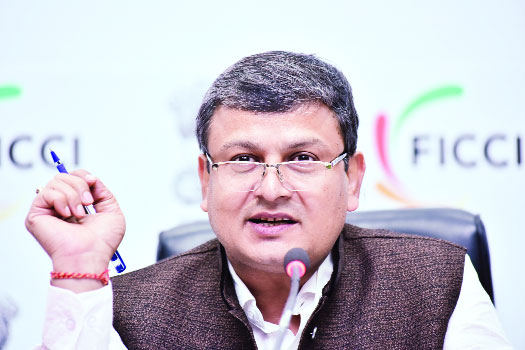To measure skill development indicators is required to accurately gauge where society stands today, says Dr Narendra Shyamsukha
With a labour force participation rate of 52.5% and a working age population of 63.4% in 2013, India still had over 40 crore unemployed individuals. This number may include those in disguised, seasonal and structural unemployment or underemployment. The latest report by the Center for Monitoring the Indian Economy claimed that the unemployment rate at the end of February, 2018 was 6.1% or about 3.1 crore in absolute terms. Skill development programmes have managed to bring to par a significant number of unemployed youth in terms of training and skill. However, those numbers still remain a minuscule proportion of the actual number of unemployed persons.
Agrarian distress is driving greater number of domestic migrants to urban centres in search of work. This continuously adds to stress on unemployment numbers. Manufacturing, which is often touted as the sector with the most potential to create sustainable employment, is witnessing jobless growth despite buoyant Make in India initiatives. It is estimated that the Indian economy would have to generate at least 10 lakh jobs every year if it is to successfully reap the much talked about demographic dividend.
Skill India mission is pledged to facilitate the entry of 104.62 million new employees into industry by 2022. Under the Pradhan Mantri Kaushal Vikas Yojana, the National Skill Development Council was expected to train 2.4 million youth in 2015 in various short-term skill courses.
To meet the targets of the Skill India mission and alleviate the gap between skills and labour supply, a more holistic approach encompassing longer-term skills and combinations with career-spanning competencies are needed. The NITI Aayog has correctly pointed out that a way to measure skill development indicators is required to accurately gauge where society stands today.
The Government hopes to build vast banks of employable workers rapidly and in a standard manner by strengthening institutions and infrastructure, exploring synergies between the government and industry and roping in overseas stakeholders and facilitators. The same policies also envision re-skilling 400 million people by 2022. However, it has also been underlined by various surveys conducted among the youth for whom the programme was meant that certifications and skills do not match their aspirations or their aptitudes. To resolve this dilemma, it has been suggested, that employability skills and attitudes be inculcated in school-going children.
It is to be noted that policy disruptions to business such as the rapid deployment of the GST and demonetisation, have presented bottlenecks to the growth of MSMEs. The silver lining is that hiring proportions from the ITI and polytechnic bases have increased in 2019 from 2018 according to the India Skill Report 2019 conducted by CII and Wheelbox.
The top hirers last fiscal have been the Banking, Financial Services and Insurance sector and software/hardware employers. These two sectors are largely fed by those who hold short to medium term skill certifications. School passouts and undergraduates could also find early starting points in the workforce from which to launch their career.


























